

Current Research
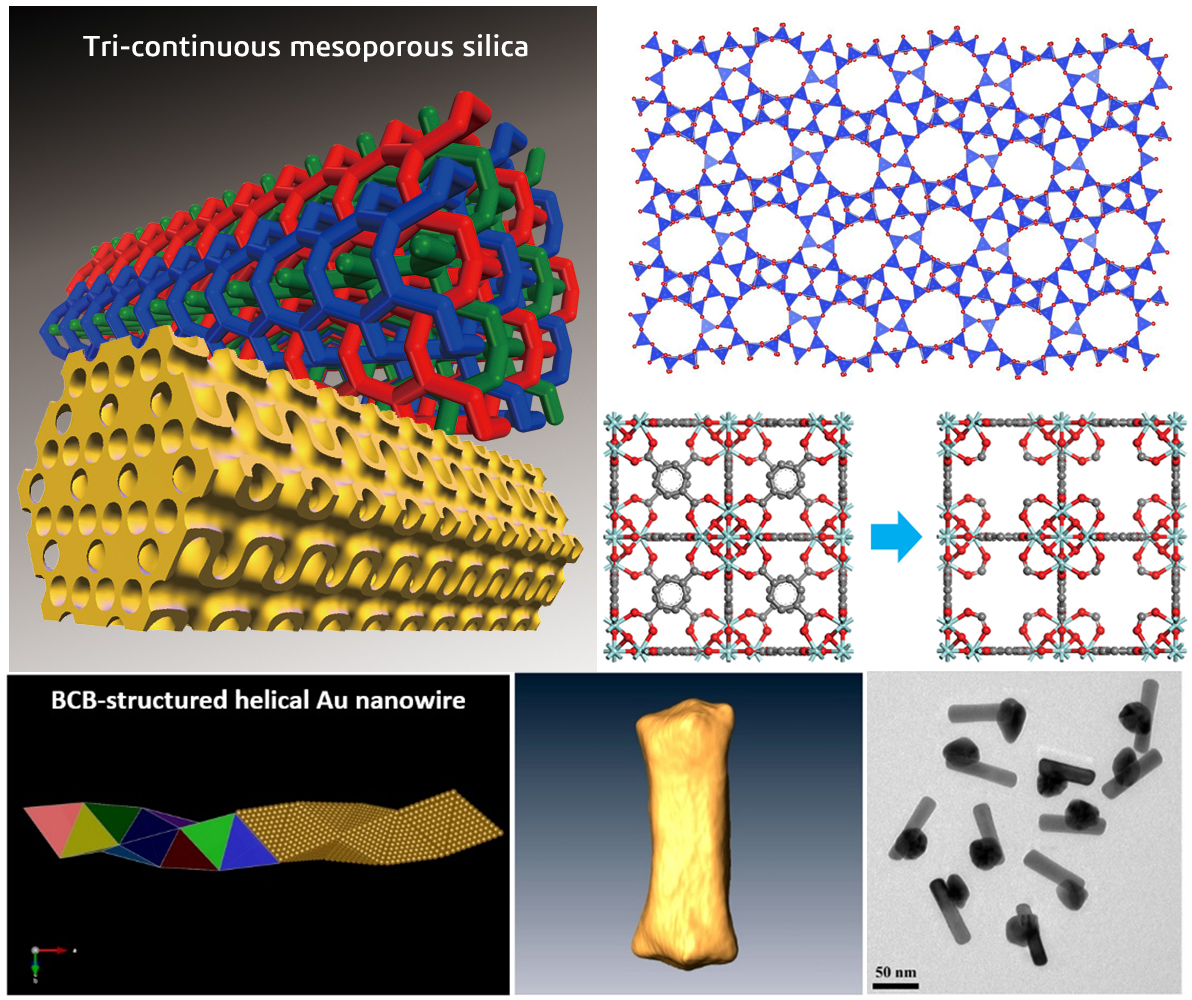 Hierarchical zeolites
Hierarchical zeolitesSelected publications:
o Beyond Creation of Mesoporosity: The Advantages of Polymer-Based Dual-Function Templates for Fabricating Hierarchical Zeolites. Advanced Functional Materials 2016, 26, 1881-1891
o Chiral Gold Nanowires with Boerdijk-Coxeter-Bernal Structure. Journal of the American Chemical Society 2014, 136, 12746-12752
o Highly Mesoporous Single-Crystalline Zeolite Beta Synthesized Using a Nonsurfactant Cationic Polymer as a Dual-Function Template. Journal of the American Chemical Society 2014, 136, 2503-2510
o Controlled Synthesis of the Tricontinuous Mesoporous Material IBN-9 and Its Carbon and Platinum Derivatives. Chemistry of Materials 2011, 23, 3775-3786
o Site-Specific Growth of Au-Pd Alloy Horns on Au Nanorods: A Platform for Highly Sensitive Monitoring of Catalytic Reactions by Surface Enhancement Raman Spectroscopy. Journal of the American Chemical Society 2013, 135, 8552-8561
o Harnessing structural darkness in the visible and infrared wavelengths for a new source of light. Nature Nanotechnology, 2016, 11, 60-66
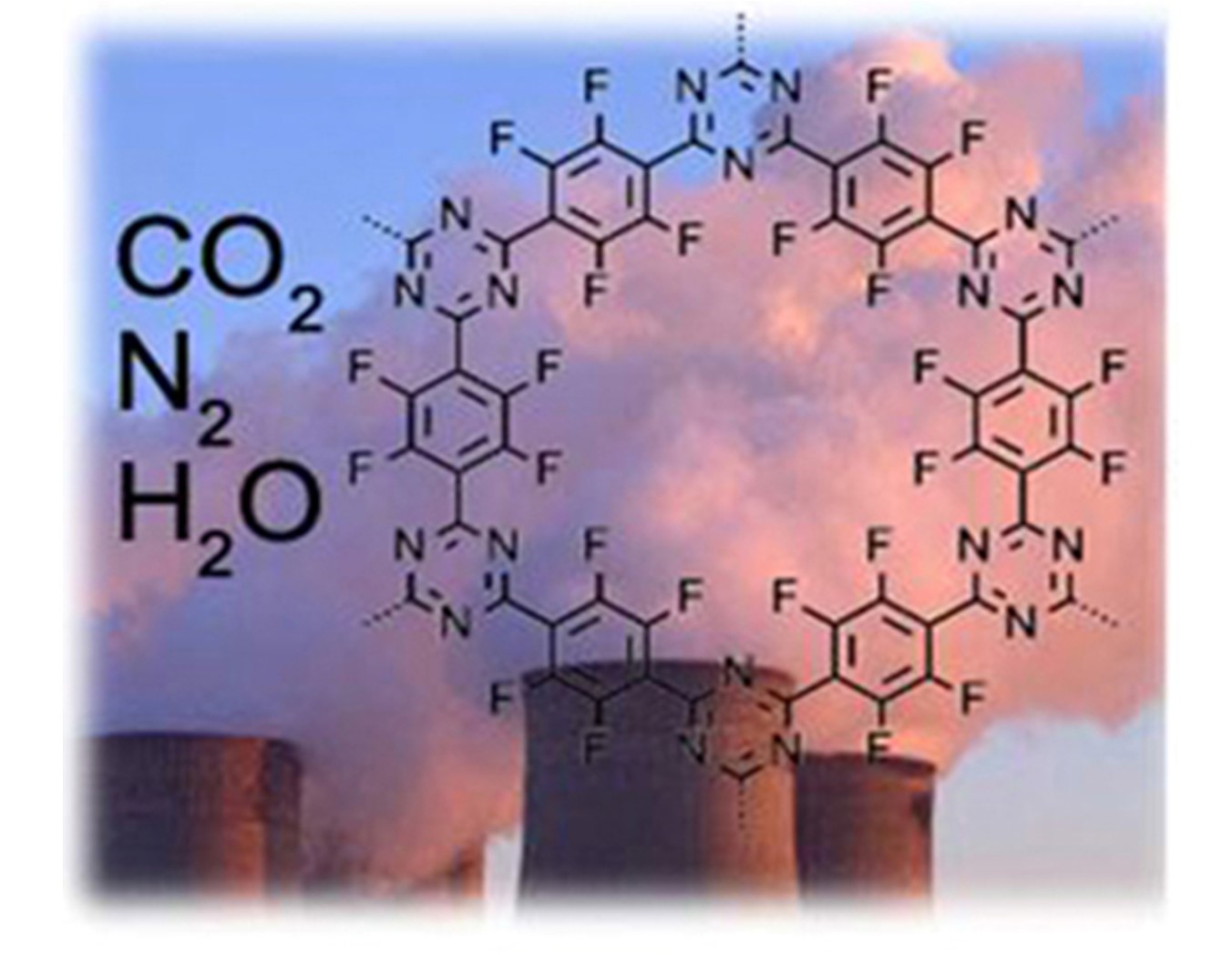 Separation of CO2 from flue gas and natural gas
Separation of CO2 from flue gas and natural gasSelected publications:
o Microporous carbonaceous adsorbents for CO2 separation via selective adsorption. RSC Advances 2015, 5, 30310-30330
o A perfluorinated covalent triazine-based framework for highly selective and water-tolerant CO2 capture. Energy & Environmental Science 2013, 6, 3684-3692
o Novel porous carbon materials with ultrahigh nitrogen contents for selective CO2 capture. Journal of Materials Chemistry 2012, 22, 19726-19731
o Superior Capture of CO2 Achieved by Introducing Extra-framework Cations into N-doped Microporous Carbon. Chemistry of Materials 2012, 24, 4725-4734
o One-of-a-kind: a microporous metal-organic framework capable of adsorptive separation of linear, mono- and di-branched alkane isomers via temperature- and adsorbate-dependent molecular sieving. Energy & Environmental Science 2018, 11, 1226-1231
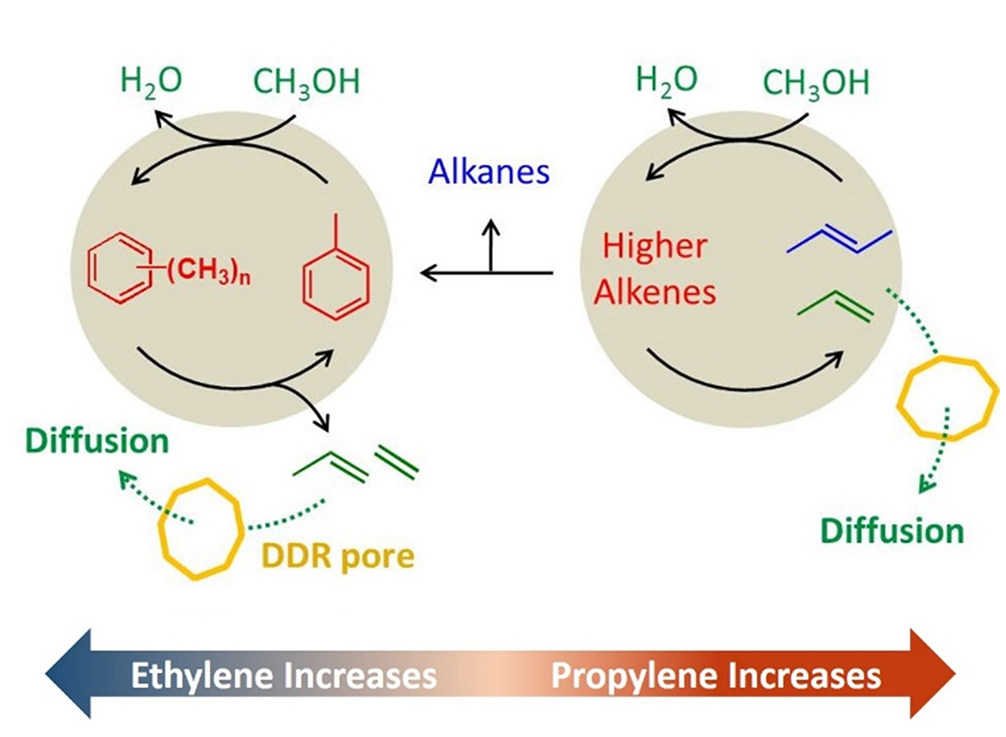 Methanol to olefins
Methanol to olefinsSelected publications:
o Methanol-to-Olefin Conversion over Small-Pore DDR Zeolites: Tuning the Propylene Selectivity via the Olefin-Based Catalytic Cycle. ACS Catalysis, 2020, 10, 3009-3017
o A mechanistic basis for the effect of aluminum content on ethene selectivity in methanol-to-hydrocarbons conversion on HZSM-5. Journal of Catalysis 2017, 348, 300-305
o Investigating the Influence of Mesoporosity in Zeolite Beta on Its Catalytic Performance for the Conversion of Methanol to Hydrocarbons. ACS Catalysis 2015, 5, 5837-5845
o Fine Tuning the Diffusion Length in Hierarchical ZSM-5 to Maximize the Yield of Propylene in Catalytic Cracking of Hydrocarbons. ACS Sustainable Chemistry & Engineering 2018, 6, 15832-15840
o Direct Conversion of Cellulose to Glycolic Acid with a Phosphomolybdic Acid Catalyst in a Water Medium. ACS Catalysis 2012, 2, 1698-1702
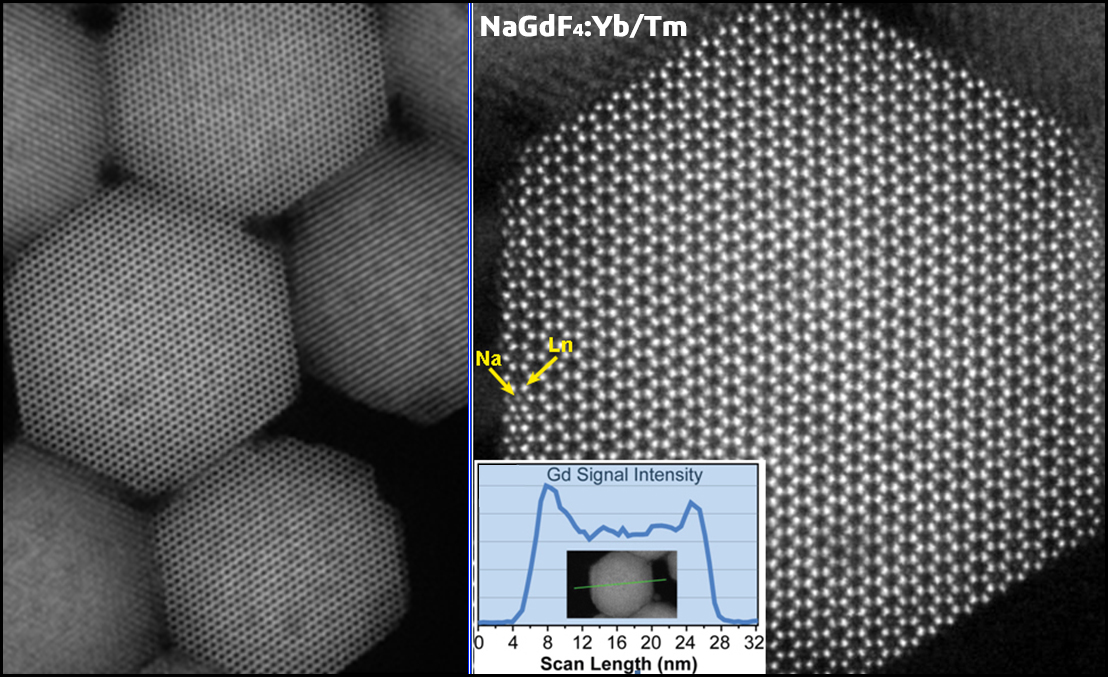
Selected publications:
o Direct Imaging of Atomically Dispersed Molybdenum that Enables Location of Aluminum in the Framework of Zeolite ZSM-5. Angew. Chem. Int. Ed. 2020, 59, 819 – 825
o Atomic-Resolution Imaging of Halide Perovskites Using Electron Microscopy. Advanced Energy Materials, 2020, 1904006
o Imaging defects and their evolution in a metal–organic framework at sub-unit-cell resolution. Nature Chemistry, 2019, 11, 622–628
o Direct imaging of tunable crystal surface structures of MOF MIL-101 using high-resolution electron microscopy. Journal of the American Chemical Society, 2019, 141, 12021-12028
o Atomic-resolution transmission electron microscopy of electron beam-sensitive crystalline materials. Science 2018, 359, 675-679
o Unraveling surface and interfacial structures of a metal-organic framework by transmission electron microscopy. Nature Materials, 2017, 16, 532-536
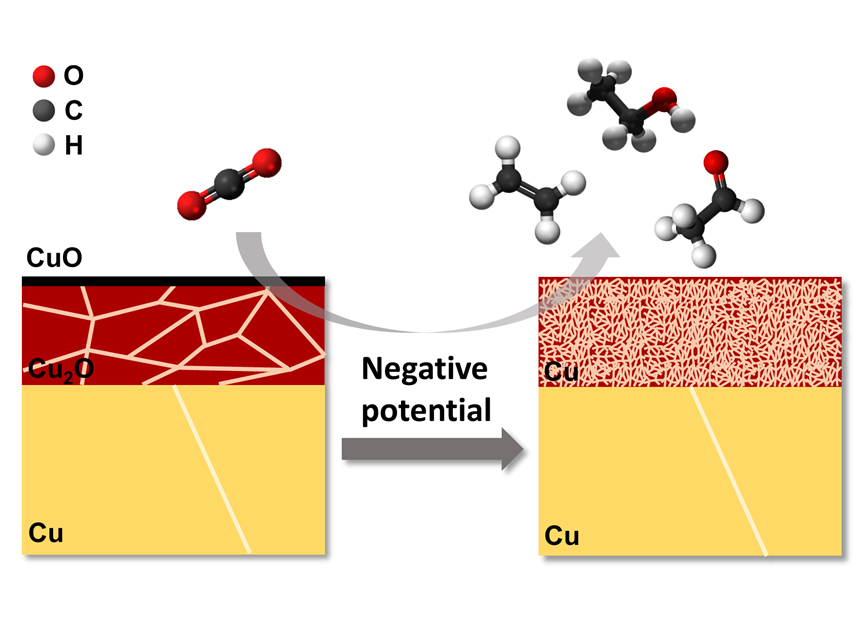
Selected publications:
o Investigating the Origin of Enhanced C2+ Selectivity in Oxide-/Hydroxide-Derived Copper Electrodes during CO2 Electroreduction. Journal of the American Chemical Society, 2020, 142, 4213-4222
o Electrochemical Conversion of CO2 to 2-Bromoethanol in a Membraneless Cell. ACS Energy Letters, 2019, 4, 600-605
o Efficient electrochemical transformation of CO2 to C-2/C-3 chemicals on benzimidazole-functionalized copper surfaces. Chemical Communications, 2018, 54, 11324-11327